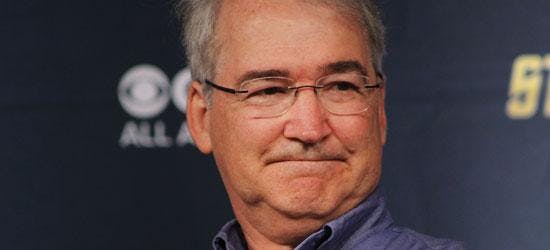Published Sep 4, 2016
NASA Trek Talks at Mission New York
NASA Trek Talks at Mission New York

NASA was in the house on Sunday at Star Trek: Mission New York with a trio of informative, educational Trek Talks panels. The biggest takeaway: Star Trek greatly inspired many young minds, leading them to the sciences in general and NASA specifically.
Trek Talks: First Contact - Looking for Life in the Universe
Dan Werthimer (SETI, UC Berkeley Space Sciences Laboratory) and Bobak Ferdowsi NASA Jet Propulsion Laboratory) teamed up to discuss the search for life, both macro and micro, here and out there. They also explored the question of, if there's life beyond us out there, how come we've not yet made first contact?

"There's an issue of planetary conservation," Ferdowsi said. "Europa could very likely be habitable. When you do find life, you have to be concerned about bringing your own life to a planet."

Speaking of landing a Rover on Mars, Ferdowsi explained, "We use a supersonic parachute that slows speeds and could work on Mars. It's a guessing game. We did call it Hope on a Rope for a while."

"If you find life on Europa and that life has independent origin," Werthimer reasoned, "then it means there is primitive life teeming everywhere in the universe."

"As long as there's an evolutionary niche," Werthimer added, "intelligence on other planets could rise and they could hopefully build a way to communicate."

"We are always looking out, Ferdowsi said. "And the further you look, you are also looking into the past."
Trek Talks: The Transiting Exoplanet Survey Satellite - NASA's Next Mission to Find Strange New Worlds
TESS is locked in as NASA's next mission designed to locate and explore strange new worlds. And NASA's Matt Ritsko and Jeff Volosin led an hour-long discussion about TESS and real-life space exploration.

"There's nothing more fun than being responsible for a mission that's flying and discovering new things," Volosin said.

"There are a lot of people working on TESS," Ritsko noted, "some very, very smart people doing some really great work."

Putting a Trek spin on the conversation, Ritsko said, "We are boldly going from science fiction to reality. We are in a time where we will start seeing more interesting discoveries."

"I don't doubt," Volosin noted, "that amateur scientists will be the first to discover new exoplanets."
Trek Talks: NASA
The final NASA panel of the day unfolded on the big stage at Mission New York. Robert Picardo moderated the session, which featured the likes of Kjell Lindgren, NASA astronaut; Michelle Thaller, Deputy Director of Science Communications; Dave Lavery, Program Executive for Solar System Exploration; Jeff Sheehy, Senior Technical Officer.

"Our human exploration today reflects the vision the writers of Star Trek had," Lindgren said.

"You can't invent something," Thaller insisted, "if you haven't imagined it."

"To really set up shop on Mars," Sheehy reasoned, "you have to wait for the stars and planets to align."

Picardo drew laughs from the crowd and panelists alike when he asked if the first astronauts to Mars will wear... red shirts.

"Space really is the final frontier," Sheehy said. "Those words motivated me as a child."

"The characters of Star Trek," Thaller noted, "seemed like members of my family."

"I discovered Star Trek," Lavery recalled, "and a light went off!"

"Diversity is necessary," Thaller argued, "for the survival of science."

"Star Trek really gave me a sense of what might be possible," Lindgren noted, "and inspired me to want to be a part of it."

"We know all too well this is a very hazardous undertaking, yet we press on," Lavery said.

"It's really technology that drives exploration," Sheehy noted.
